RARE! 8th Air Force 100th Bomb Group IJMUIDEN - HOLLAND Aerial Mission Raid Intelligence Photograph
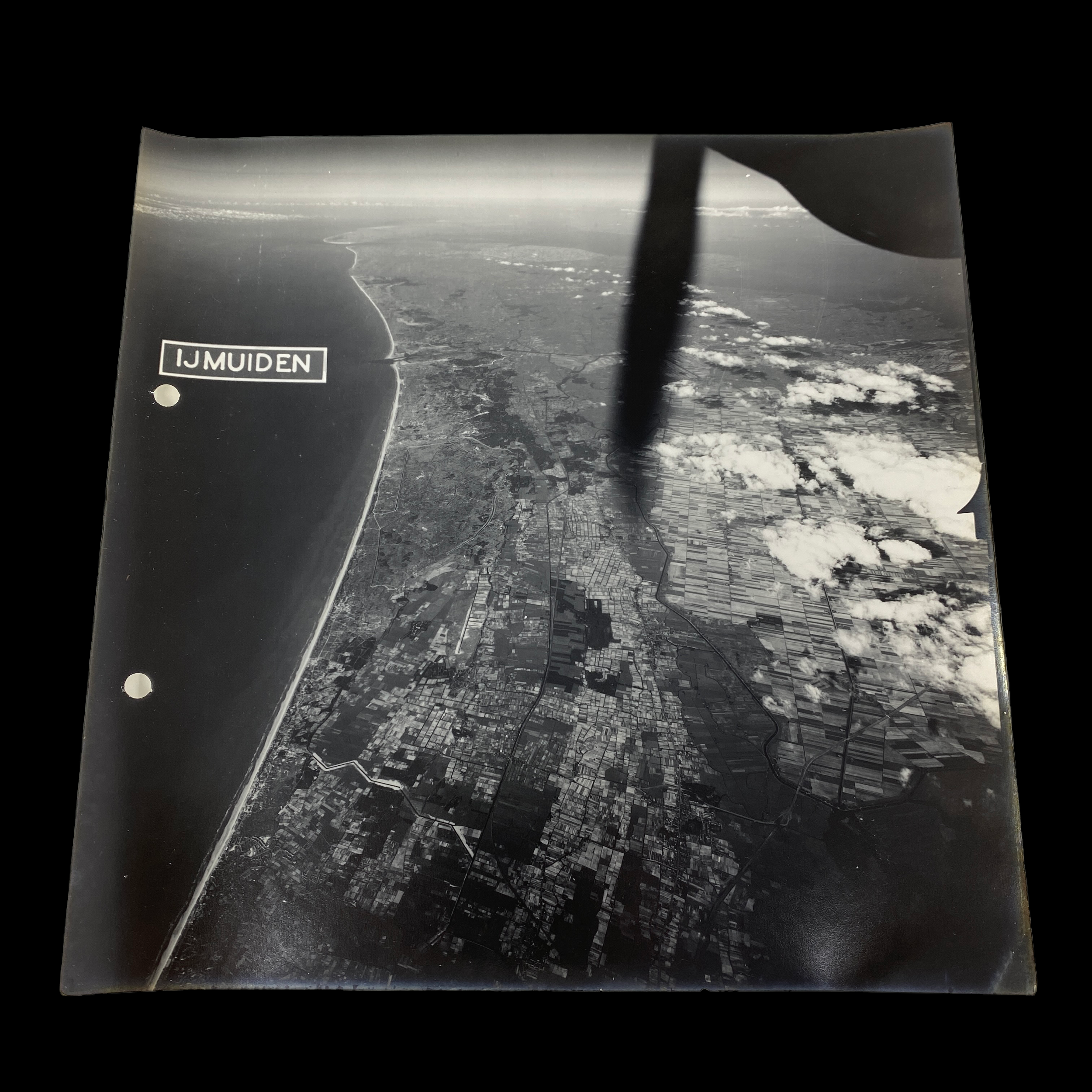
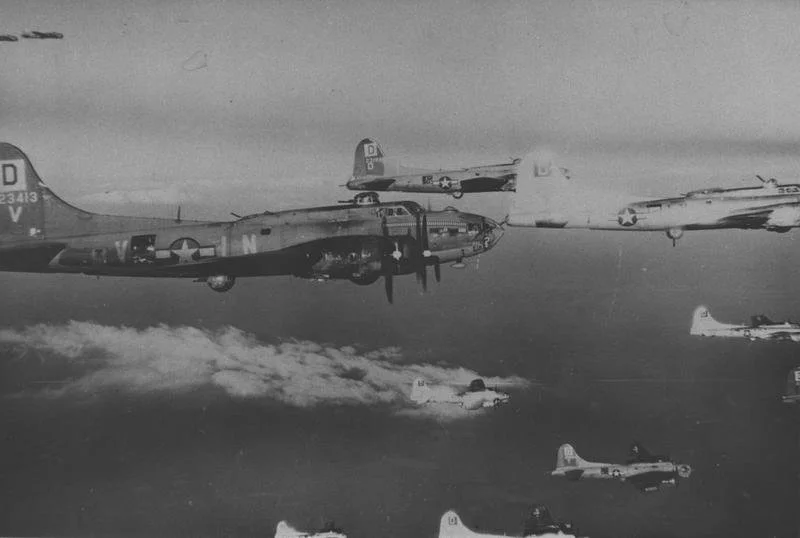
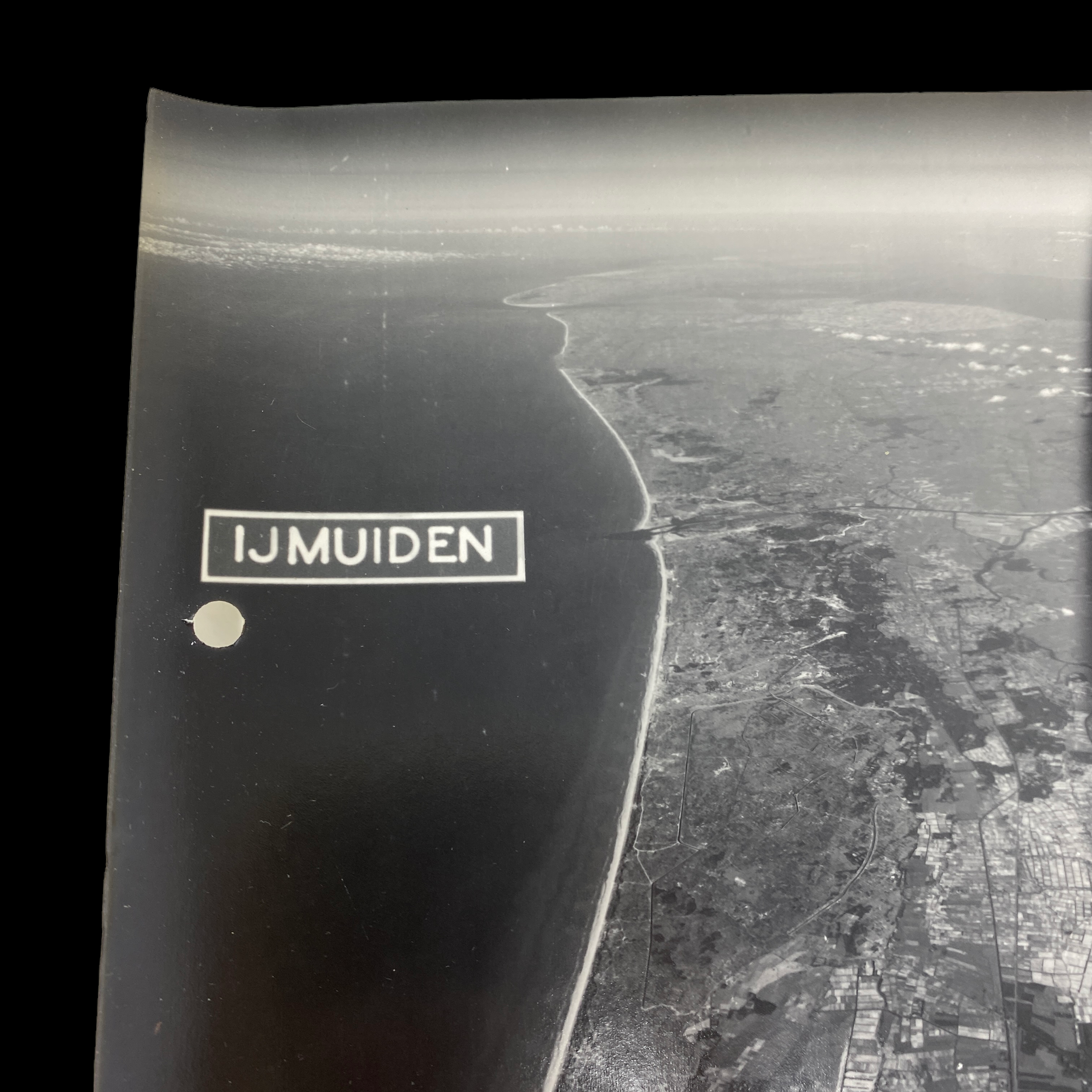
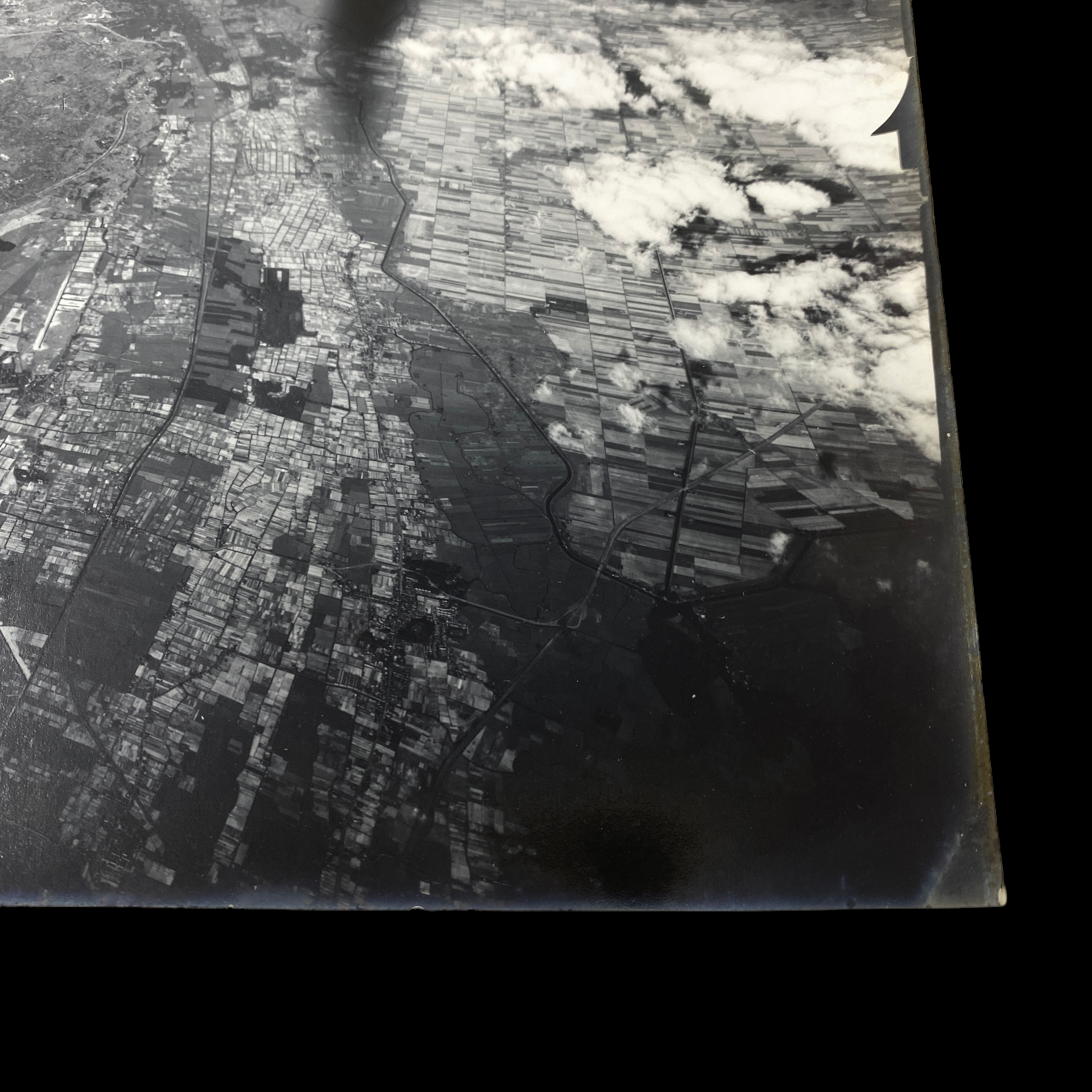
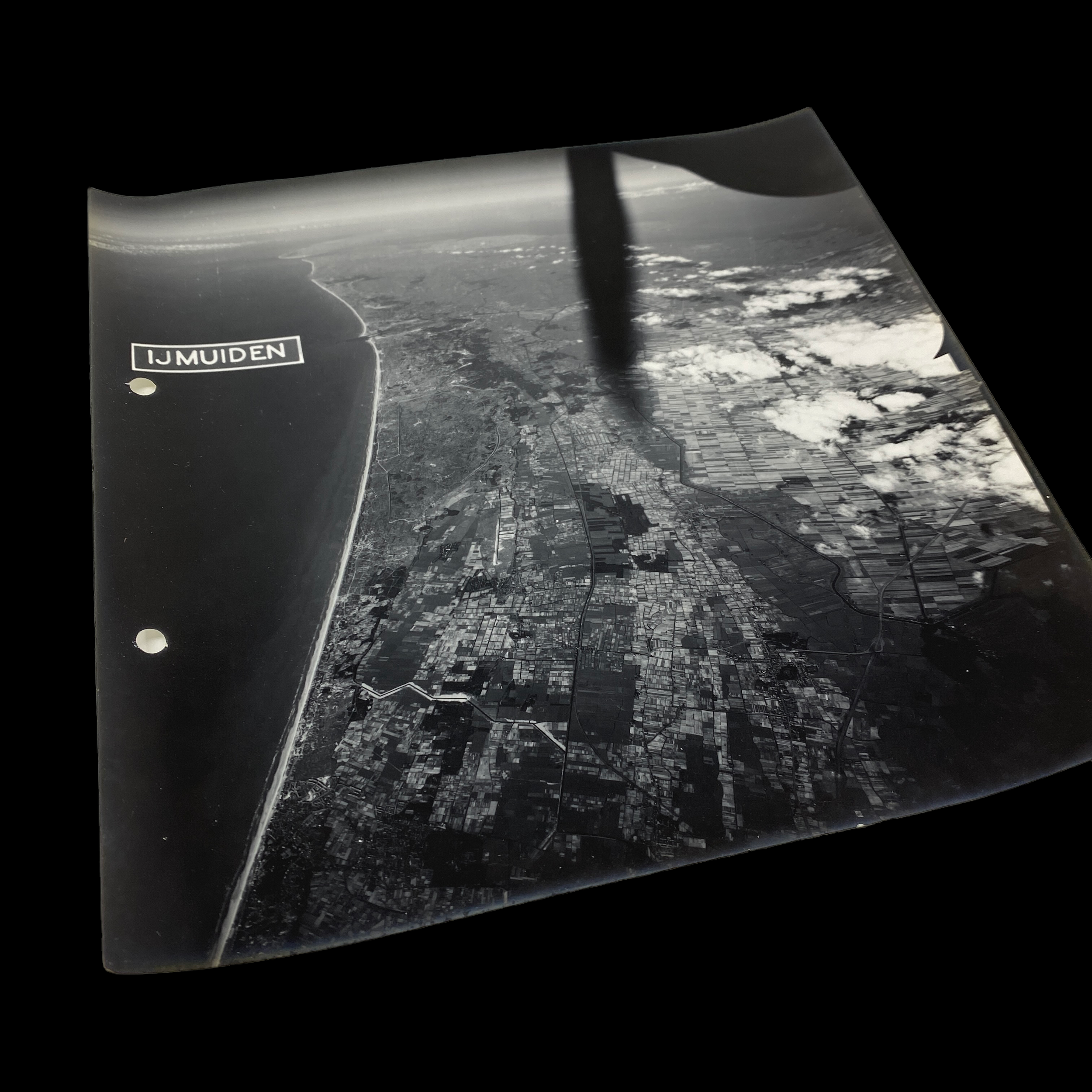

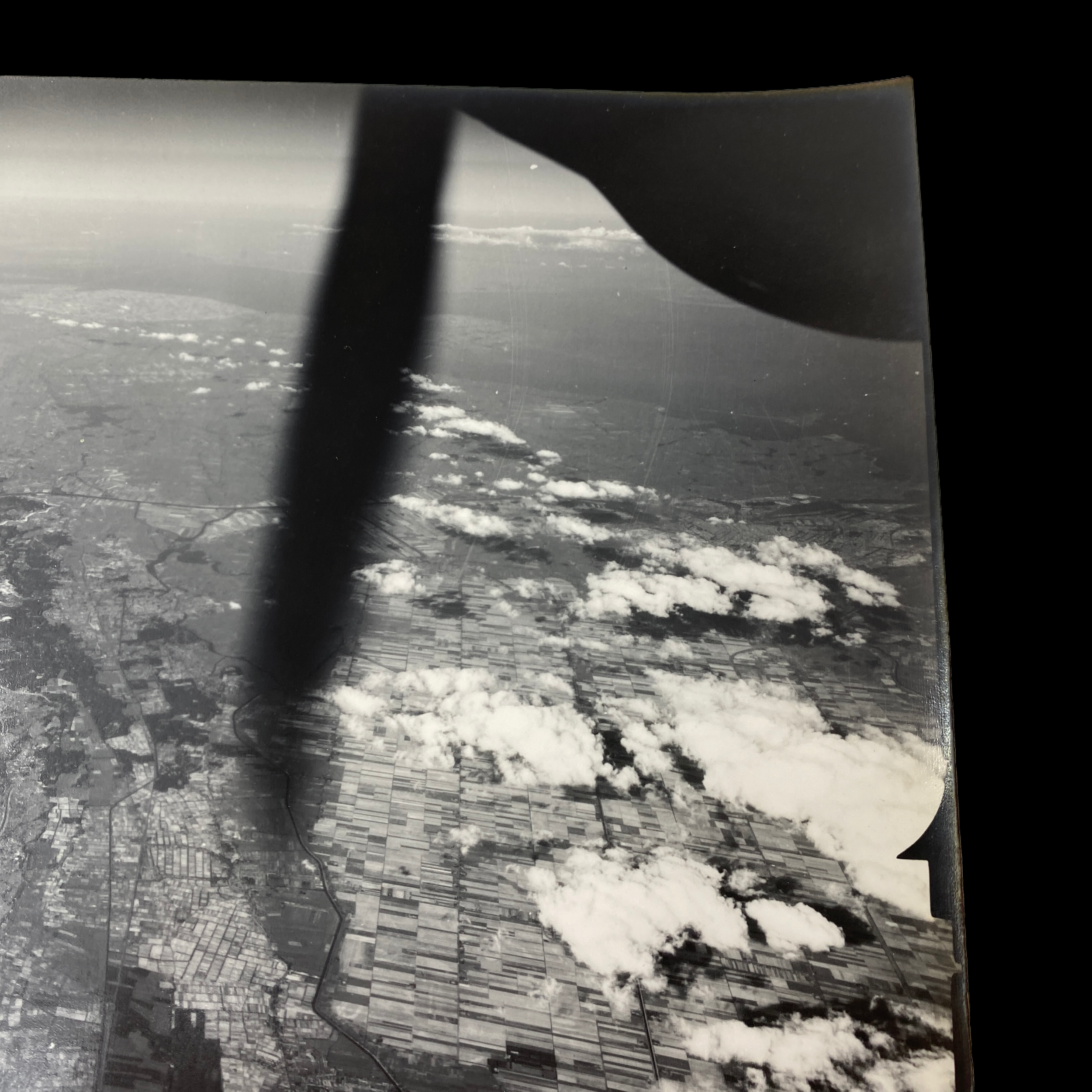
RARE! 8th Air Force 100th Bomb Group IJMUIDEN - HOLLAND Aerial Mission Raid Intelligence Photograph
Comes with C.O.A.
*This 8th Air Force 100th Bomb Group aerial mission photograph shows the Axis-occupied town of “IJMUIDEN - HOLLAND”. The port city of IJmuiden in Netherland was considered by the Germans to be so strategically important that it was upgraded to “fortress” status (“Festung”). See below for the 100th BG group history titled “AIR BATTLE OVER THE NETHERLANDS” by Ab. A. Jensen.
This incredibly rare and original WWII aerial bombing mission raid photograph was taken by the B-17 Flying Fortresses of the 8th Air Force. These "Bloody Hundredth" aerial raid photographs were taken during bombing raids of the 100th Bomb Group as well as other important German-occupied towns and cities. Even if that particular town was not apart of the mission’s bombing run, some of the 8th Air Force’s B-17s were tasked with also photographing these areas FLYING TO and FLYING BACK from their bombing runs.
These aerial photographs were developed and printed following a mission where they would be printed in theater and used for vital military intelligence. These aerial raid photos provided the 100th Bomb Group and the 8th Air Force with crucial photographic intelligence that could be used for updated air revision maps, FLAK map adjustments, as well as target identification for future aerial raids. Following the D-Day landing in Normandy aerial photographs like these were used to provide soldier on the ground with the most accurate maps of the German defences. These photographs were indispensable and were used in many different ways.
This incredibly rare aerial raid mission photograph shows exactly what the 100th Bomb Group B-17 pilots, navigators, and bombardiers saw on their missions. This is an incredible piece of World War II history!
This aerial bombing mission raid photograph was a bring back of a WWII navigator veteran who served extensively with the 100th Bomb Group (8th Air Force) during WWII. This 8th Air Force veteran brought back ALL of his bombing raid mission maps during his time serving from 1942 till VE-Day in 1945. This veterans collection has been requested to be pieced out to spread the legacy of the airmen of the 8th Air Force that sacrificed their lives for our freedom. A portion of this sale is also being donated to the non-profit Honor Flight Network. The mission of Honor Flight is to transport America’s veterans to Washington, D.C. to visit the memorials dedicated to honoring those who have served and sacrificed for our country.
The 100th Bomb Group was constituted as a heavy bomber group inside the Eighth Air Force, which, at peak strength on D-Day, June 6, 1944, fielded 40 groups of Boeing B-17s and Consolidated B-24s. The 351st Bomb Group flew strategic bombing missions from their base at Polebrook, Northamptonshire from April 1943 to June 1945.
The 100th Bomb Group also known as the "The Bloody Hundredth", because of its reputation for losing a high number of aircraft and crews.
Over the course of 22 months of aerial combat, the aircrews of the 100th had served a deadly apprenticeship as they honed their skills and tactics. In an unemotional analysis of the raw numbers, the Bloody 100th’s wartime losses were not the worst suffered by the Eighth Air Force, though they were in the top three of losses by heavy bomber groups. The official history from the 100th Bomb Group Foundation cites 184 missing aircrew reports on 306 missions. In his memoir An Eighth Air Force Combat Diary, 100th copilot John Clark pointed out that “50% of the Group’s losses occurred in only 3% of its missions.” Like a gambler whose luck has gone cold, when the crews of the 100th had a bad day, they had a very bad day.
More than 26,000 Eighth Air Force personnel sacrificed their lives in service to the war effort. The total number killed or missing in action was slightly more than that suffered by the U.S. Marine Corps, and a little less than half the losses sustained by the entire U.S. Navy. Comparisons such as these do nothing to diminish the contributions of other military branches, but rather point out the gargantuan scale of the Eighth Air Force’s effort. The 100th Bomb Group’s portion of those losses was 785 men killed outright or missing in action and 229 aircraft destroyed or rendered unsuitable for flight.
*Full Mission History of the 100th Bombardment Group (Heavy) during WWII:
Constituted as 100th Bombardment Group (Heavy) on 28 Jan 1942. Activated on 1 Jun 1942. Used B-17’s to prepare for duty overseas. Moved to England, May-Jun 1943, and was assigned to Eighth AF. Operated chiefly as a strategic bombardment organization until the war ended. From Jun 1943 to Jan 1944, concentrated its efforts against airfields in France and naval facilities and industries in France and Germany. Received a DUC for seriously disrupting German fighter plane production with an attack on an aircraft factory at Regensburg on 17 Aug 1943. Bombed airfields, industries, marshaling yards, and missile sites in Western Europe, Jan-May 1944. Operations in this period included participation in the Allied campaign against enemy aircraft factories during Big Week, 20-25 Feb 1944. Completed a series of attacks against Berlin in Mar 1944 and received a DUC for the missions. Beginning in the summer of 1944, oil installations became major targets. In addition to strategic operations, the group engaged in support and interdictory missions, hitting bridges and gun positions in support of the Normandy invasion in Jun 1944; bombing enemy positions at St Lo in Jul and at Brest in Aug and Sep; striking transportation and ground defenses in the drive against the Siegfried Line, Oct-Dec 1944; attacking marshaling yards, defended villages, and communications in the Ardennes sector during the Battle of the Bulge, Dec 1944- Jan 1945; and covering the airborne assault across the Rhine in Mar 1945. Received the French Croix de Guerre with Palm for attacking heavily defended installations in Germany and for dropping supplies to French Forces of the Interior, Jun-Dec 1944. Returned to the US in Dec 1945. inactivated on 21 Dec 1945.
AIR BATTLE OVER THE NETHERLANDS:
While we citizens of the German occupied Netherlands began a new day on the 11th of December 1943, 538 heavy bombers of the U.S. Army Air Force assembled over England. Individual planes, B-17s and B-24s, joined into elements, flights, squadrons and groups and then into wings before wheeling toward Emden, Germany. As they did, 313 P-47 Thunderbolts from seven groups, 31 P-38s from the 55th Fighter Group took off or readied for takeoff to carry out escort duties to the Big Friends. Since Emden was not a distant target, fighters would be with the bombers at all points along the route, A layer of dark stratus hung over the English countryside at 5,000 feet as the first Thunderbolts began a slow climb toward its bottom.
The 8th Air Force field order, outlining the mission directed the bombers to feint, flying west almost to Helgoland, before suddenly turning southwest to cut back on Emden, making straight for the target. The object was to fake any German fighters coming up through the clouds into the defending the Bremen-Hamburg area further east. Escort in the target area would be provided by the P-51s of the 354th, flying its third mission, and first deep penetration escort, across the Dutch provinces of Friesland and Groningen, directly to Emdem.
All was not well though, for the meteorological forecast had underestimated the winds. While the fliers battled a 75 mph headwind that mad the trip over the North Sea longer than planned, the lead bomber navigator, changed the original turning point from near Helogland to one further west. This meant the bombers would be over the target before the rendezvous with their fighter escort. Up ahead, unexpected breaks in the cloud layer became larger and larger, revealing the northern coast of Germany. The hope that cloud cover would keep the Germany fighters grounded vanished. Before the first bomber cut in at the East Frisian coast it happened: "Fighters at one o'clock high!"
While the U.S. forces had taken formation over England, German radar plotters, ever attentive, recorded the first blips on their radar screens and watched the strong build-up of bomber formations. Minutes later the entire German defenses were alerted: "Ansammlungen in Dora-Dora." Messages were at once relayed to the various fighter bases. At these bases young, aggressive fighter pilots were ready to man their sleek Messerschmitt Me 109s, the stalwart Focke Wulf 190s, the much propagandized "Zerstorer", Messerschmitt Me 110, and even the all-purpose Junkers Ju 88.
"Alarmstart!" Black overalled mechanics stuck the cranks on the gray engine cowlings of the Me 109s and heaved. Three bladed props kicked and spun around. Quickly the men scrambled from the wings to avoid being tossed off by air blast. Cockpit canopies were closed, and the fighters took off with roaring engines. At Jever, trees lined the runway of the Luftwaffe fighter base, well hidden in a stretch of timber, flashed by planes as they took off. Wheels still turning, folded into the wings and spinners pointed upward as the fighter commenced their long climb to altitude.
"Dicke Autos in Dora-Nordpolgehen Sie auf Hanni achtnull!" the controllers instructions crackled in the fighter pilots earphones as they went for the bombers.
At landfall in, the first two boxes of the 3rd Bomb Division, led by the 390th Bomb Group, were attacked by six twin engine planes that dived out of the sun and concentrated on the 390th's lead plane. "It was a frontal attack," the Group history reports, "which knocked out the lead ship and swept through the lead squadron. Before the deputy lead could reassemble the formation, 30 single engine fighters joined the battle and shot down 4 other Fortresses."
The lead plane - probably "Six Nights in Telergma" piloted by Capt. Hiram C. Skogmo - carried 11 men that day, including the strike leader, Major Ralph V. Hansel, Group Operations Officer of the 390th. Crew assignments had been altered slightly. Major Hansel rode as co-pilot, while Lt. W. Poythress, Jr. was in the tail gunners position in order to observe the following groups. The Group Navigator, Capt. Donald S. Warren, was an eleventh man. He was with Capt. Irving R. Lifson, the Squadron Navigator, in the nose, giving the lead plane two navigators.
It was still over the North Sea that this plane was attacked by enemy fighters and shot down. Only three men survived: Capt. Warren, Capt Lifson and T/Sgt E. Phillips, the top turret gunner. Capts. Lifson and Warren landed by parachute on the German island of Nordersey, and Phillips came down in the water nearby. The three were captured and spent the rest of the war in a POW camp.
On the homeward route, the U.S. formations passed over the northern Netherlands. To the right of the planes lay the West Frisian Islands, brown-green specks in the bluish gray of the Dutch Shallows (the "Wadden") bordered by pale yellow fringes of golden beaches. There in better times, thousands of Dutchmen peacefully enjoyed their summer holidays, but now steel-helmeted men angrily threw up dirty puffs of shells at the high flying raiders.
Below were the brown checked fields of Groningen, an old country that throughout the centuries had been guarded against the onslaught of the North Sea, furiously swept toward the shores by northwesterly gales. The people in the fields, in the villages and in the towns looked up at the tiny specks roaring high in the sky overhead, painting a mass of vapor trails against the blue. And they thought: "Here they are again. It is good to bring the Germans some of their own stuff. Smash them. They deserve it and the sooner this war is over and the pillaging Nazis gone!"
While the people watched, however, packs of German fighters furiously pressed home attacks on the U.S. bombers as they made their way back across the Netherlands. From the ground little of the action, which the high keen whine of the fighters, the shrill staccato of machine gun fire and the dull pop-pop-pop of cannon fire brought to their ears, could be seen.
At the Dutch-German border -- somewhere near Nieuwe-Schans -- snarling staffels of German fighters flung themselves at one formation. A bomber was hit and struggled to stay in the air. Five or six men were seen to abandon the smoke-trailing aircraft, then something happened which still infuriates the people of the village of Finsterwolde. As they watched the destruction of the Big Friend, the German flak battery of the "Steiling Dollard-Sud", in the Carel Coenraad polder, hurled it death-dealing shells into the helplessly descending fliers who had bailed out. One of the parachutes was shot to ribbons, and the man dropped like a stone onto the hard frozen ground below.
While mighty vapor-trailing formations still above and the penetrating rhythm of hundreds of engines reverberating to the dark earth -- sights and sounds the older generation of today will never forget -- the plane that had been partially abandoned burned and, and in its death agony, circled high in the sky. Then it crashed, its fuselage cart wheeling end over end. All around the house of Mr. Roelf Remmers fragments came down, but by some miracle the house was untouched although the children cried for fear. One wing wedged itself upright in the ground.
Six men had successfully bailed out of this plane, belonging to the 560th Squadron of the 390th Bomb Group, and are said to have been helped to escape by the Dutch Underground, though this has never been verified and other accounts speak of at least one man being captured. The men were: Lts., Lester N. Mensch, Clyde L. Hughes and Marion E. Wiles. T/Sgt Edward W. Mayo, Sgt Maius Magnerelli and Sgt Kenneth W. Wheeler. Four crew members were killed including the man whose parachute was shot apart in the air.
Groningers received more than their share of the day's action, as four heavy bombers came down in their province. One of the most spectacular crashes ever witnessed was that of a Boeing B-17, serial number 42-30667, of the 390th Bomb Group. It came down near a small village by the name of Harkstede, a few miles east of the town of Groningen. Witnesses tell how the big bomber circled over the village and how, all of a sudden some half dozen white spots blossomed against the bright blue of the winter sky. I myself, then a boy of 14, having just left high school in Groningen that Saturday noon, remember how somebody excitedly exclaimed: "Hey look Balloon!" He was, however, soon corrected by a more experienced observer who told us that the tiny white dots were parachutes. The crew of a bomber had abandoned their stricken plane! Fascinated, we watched the unusual scene.
High above Harkstede the big bomber trailed smoke, reeled and plunged down with one of the wings breaking off while still another crew member, the pilot, bailed out. The plane plummeted earthward to crash with an enormous explosion on a plot of pasture land, an ominous pall of smoke making the site of the crash and the end of a Big One. One German fighter roared low over the wreckage, then turned and disappeared.